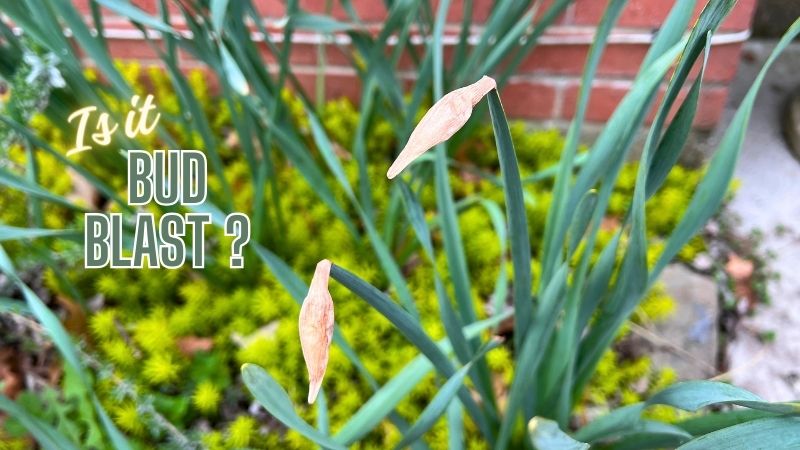Do My Daffodils Have Bud Blast?
I had some daffodils that did not bloom this year. They developed buds. but as I watched and waited, those buds turned papery brown and then never did anything else.
Opening one of the buds, it was just slimy and “empty” of any firm bud at all. I had to research to find out what went wrong. As best as I can figure out, they had Bud Blast.

Bud blast in daffodils is a disheartening condition for any gardener, characterized by the buds turning brown and drying out before they have a chance to open.
I am trying to understand the causes of bud blast, how to identify it, and the steps that can be taken to mitigate its effects. Or should I just pull them?
Identifying Bud Blast in Daffodils
Bud blast can often be confused with other plant issues, but it has some distinctive signs. The most obvious is the condition of the buds themselves. My daffodils turned brown and shriveled before they had a chance to open. The foliage of the plant still looked healthy, which is even more puzzling.

Causes of Bud Blast
I found that Bud blast in daffodils can be caused by several factors, often related to environmental stressors:
- Water Stress: Both overwatering and underwatering can lead to bud blast. Daffodils require well-drained soil to prevent root rot, but they also need a consistent supply of moisture, especially when buds are forming.
- Temperature Fluctuations: Sudden changes in temperature, especially late frosts, can damage the developing buds.
- Nutrient Imbalance: A lack of essential nutrients, particularly potassium, can affect bud development. Conversely, an excess of nitrogen can lead to lush foliage at the expense of blooms.
Replanting and Infection Concerns
Since I’ve experienced bud blast in my daffodils, I am wondering if it’s safe to replant in the same spot or if the condition will spread to other bulbs.
The good news is that bud blast is not a contagious condition. However, if the bud blast was caused by a pest infestation or disease, it’s important to address that underlying issue before replanting that area.

- Soil Amendment: If replanting in the same spot, consider amending the soil to improve its structure and drainage.
- Crop Rotation: While not always practical for perennial plants like daffodils, rotating your planting areas can help prevent the buildup of pests and diseases.
- Sanitation: Remove and destroy any affected plant material to reduce the risk of pest and disease carryover to the next season.
My daffodils becoming infected with bud blast was a frustrating issue, but at least now I have an understanding of its causes and can take proactive steps to prevent it . I may just pull them all out and start over with new ones in the fall.
I love daffodils in spring and want them to remain a vibrant and beautiful part of my spring garden. With proper care and attention, my daffodils hopefully can thrive and continue to bring joy year after year.


